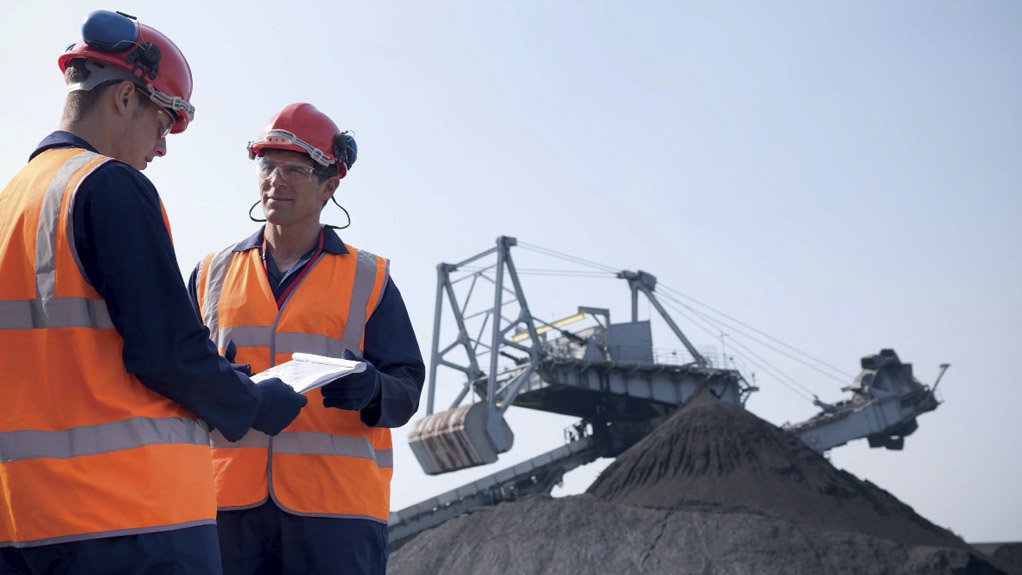The African mining sector is under pressure to become three times more efficient in minerals processing to ensure its sustainability amid low commodity prices, producing more product at a lower cost to become globally competitive.
All mines are being forced to adopt mechanisation, which is inevitable, states global energy management and automation specialist Schneider Electric Southern Africa head of mining, metals and minerals Wilhelm Swart.
He highlights that the effective mechanisation of a mine comprises three important factors – process excellence, operational excellence and energy efficiency. It has the equally important benefit of improving mine safety.
“If a mine is not working towards becoming more efficient and effective to ensure greater throughput at a lower cost, it can be delayed until such time that it can implement greater mechanisation or automation.”
Swart notes that, in certain areas in Africa, where secure energy supply is a challenge, the efficient and cost-effective operation of projects is a challenge, subsequently resulting in project start-up being delayed. Conversely, in South America, which boasts a better operating environment, owing to sufficient energy supply and attractive mining policies, projects can push production in terms of tons per kilowatt and tons per dollar to sustainable and globally competitive levels.
Nonetheless, Swart points out, beneficiation of certain commodities is not confined to the country of origin, specifically owing to a lack of electricity for cost-effective minerals processing.
The required level of efficiency can be achieved by adopting mechanisation and automation, which goes hand in hand with the Internet of Things (IoT), or industrial Internet, he says.
“We live in a world where we have to do more with less. Owing to the constraints placed on mining operations, as a result of weak commodity prices, which are slowly recovering in some areas, such as gold, mining companies need to do more to become efficient and effective producers.”
Swart says Scheider Electric supports mechanised mining and one of its key areas of expertise is mining processes.
“It is important to ensure that materials are handled optimally to reduce waste, as plants include multiple interacting nonlinear processes, such as the milling of raw materials. Further, it is important that control systems are implemented to monitor plant performance,” he explains.
To ensure efficiency, Swart recommends the implementation of mechanised and automated equipment with IoT, which facilitates the gathering of information through the integration of complex physical machinery, with networked sensors and software to monitor processes and collect data for analysis.
Data is analysed to assist in facilitating the most efficient functioning of mining equipment. “Inefficiencies can be found in the improper deployment of machines, their operation – namely failure to meet nameplate capacity – or bad scheduling,” Swart explains.
Information can be made readily available on smart devices, such as tablets, which can also be used to log anomalies regarding the functioning of equipment or processes, allowing for a photo to be taken to document such an occurrence, he explains.
Safety, Consistency Skills
Swart emphasises that the idea behind mechanisation is not to actively reduce a mine’s workforce, but rather to increase productivity, which improves safety and reduces risk of harm, adding that mines that do not implement mechanisation or automation become less competitive in the global market.
Since minerals have been mined for so many years in South Africa, miners have to venture deeper and deeper, which increases the safety risks involved for mineworkers.
When safety is compromised, a mine is shut down for investigation purposes, reducing production and, consequently, revenue, he adds.
“However, by employing mechanisation and automated technologies, there will no longer be a need for mineworkers to go down mine shafts. Better and faster decisions can be made by employees, facilitating quicker reactions to burgeoning issues from the safety of the surface,” Swart points out.
Further, mechanisation and automation result in reliability, as they facilitate the consistent functioning of equipment and processes. “Mechanised machines are consistent at throughput and less affected by the operating environment, [as they are less affected by seismic activity, significantly less ventilation and cooling is needed and more cost-effective support structures can be employed], ” he says, adding that through the linkages afforded by automation and mechanisation, there is greater awareness of the mining operation as a whole.
“There are analytics and preventive maintenance systems that foresee when things are about to go wrong.”
Swart states that a shift in skills is needed to effectively use mechanised and automated technologies. Therefore, workers need to undergo training on not only the operation of new machinery and systems but also cybersecurity. He also highlights a need for a remote, secure technical centre at mines to house workers tasked with operating and monitoring equipment.
“When we deploy a system, operator training is provided [along with] an operator manual,” Swart adds.
This training involves simulation and technical training and three-dimensional (3D) augmented training.
Swart does point out, however, that not all mines want to invest in 3D training, owing to the expense involved as well as operators viewing the equipment being used as noncritical or the operations as noncomplex, thereby feeling it is not warranted. But, he remains resolute that, in light of global competitive pressures, mechanisation and automation are often inevitable.
Edited by: Tracy Hancock
Creamer Media Contributing Editor
EMAIL THIS ARTICLE SAVE THIS ARTICLE
To subscribe email subscriptions@creamermedia.co.za or click here
To advertise email advertising@creamermedia.co.za or click here













